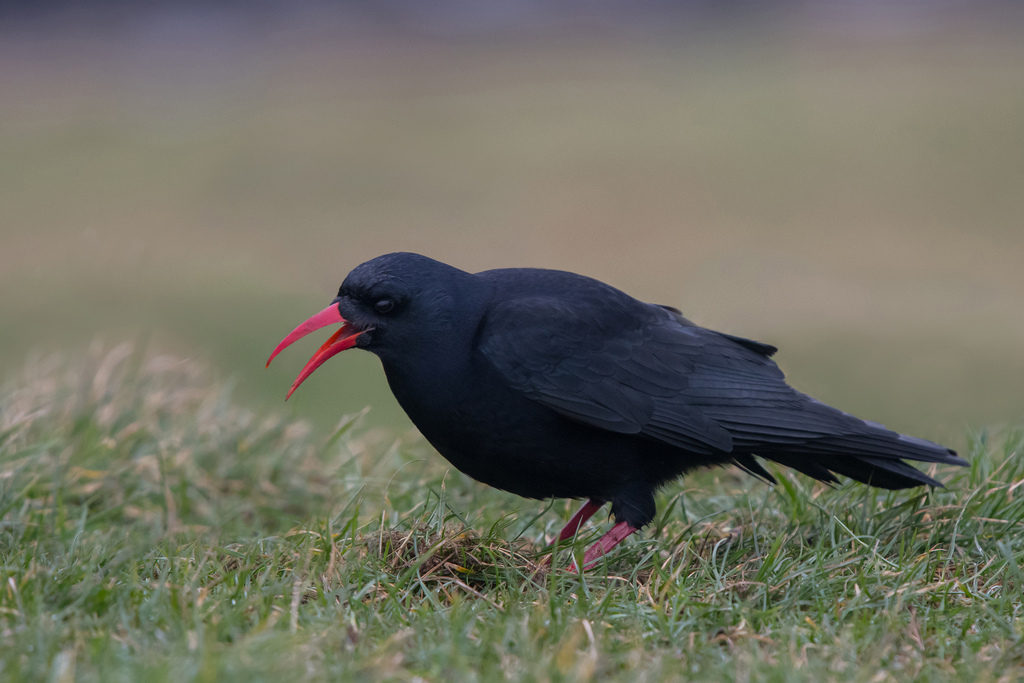
Tim writes: In Britain, Choughs (Pyrrhocorax pyrrhocorax) are rather rare, and probably always have been as there are few English folk names for them. There are many ancient references to Chough but that is because this was the name originally applied to the Jackdaw. Shakespeare refers to Choughs in seven of his plays but at this date he can have only meant Jackdaws (he was writing about 1590-1613). The name Cornish Chough was the real Chough’s earliest name (Turner 1544) as it was literally the Cornish Jackdaw (also called Cornyssh daw in 1575). Thomas Bewick (1804) was the first to drop the epithet “Cornish” and just called it Chough as by this date the name was no longer used for Jackdaw. As Chough is a defunct onomatopoeic name for Jackdaw it is certain that it was originally pronounced “Chow” (similar to Bough being pronounced bow). But everyone now pronounces it “Chuff”.
This was a vagrant Chough that spent several weeks on the Lancashire coast in early 2018.
[registration_form]
Most choughs would have been found in areas that where not English speaking until recent times. This is perhaps the reason for the lack of English names.
Thanks Stephen. You are right. In Wales, where the Chough is commoner and more widespread it has at least two names; Brân big-goch (red-billed crow) and Brân goesgoch (red-legged crow).
There seems to be something odd about the pictured bird’s eye. Was it injured or is it just caught in the process of blinking?
The Provincial Names of British Birds (Swainson 1885) gives the following names for chough:
Cornish daw or Cornish jack
Cornwall kae [Kae and Ka are given in the same book as Scottish/Orkney names for Jackdaw]
Market Jew crow “from its frequenting the neighbourhood of Marazion”
Red-legged crow
Killigrew
Chauk or Chauk-daw
Daw
Hermit crow
Cliff daw
Sea Crow (Ireland).
The same source states that ‘It was an old belief in Cornwall, according to Camden, that the chough was an incendiary, “and thievish besides: for oftentimes it secretly conveieth fire sticks, setting their houses a fire and as closely filcheth and hideth little pieces of money”‘
Thanks for the comment Jonathan, lots of interesting stuff here. The eye is a reflection of the half land, half sky which was behind me. The nictitating membrane moves from side to side rather than top to bottom.
I have always wanted a copy of Swainson but have never owned one. But Francesca Greenoak’s excellent All the Birds of the Air gives a similar list, but they are all variations on a similar theme (Crow/Daw) compared with other folk names that would be unfathomable unless you knew (eg Ox-eye, Joe Ben, Tommy Noup, Sawfinch or Saw Sharpener for Great Tit, to name but a few).
Lewis Loyd’s Bird Facts and Fallacies (no date but c1927) gives the same quote about fire sticks, but adds “It is probable that this legend, from Camden’s “Britain”, should be more properly referred to the Jackdaw.” Which is what I thought when I read it, given they nest in chimneys and have a reputation for stealing things.
Yes I agree – probably the same confusion as with the Shakespearean references to choughs, reflecting the sharing of names between these two species. The french name for the jackdaw is choucas (pronounced ‘shoo-ka’) which similarly reflects the sound of the birds call and seems etymologically related to ‘chough’. In France, of course, there are two choughs which are called the crave a bec rouge (red-billed) and the chocard a bec jaune (alpine) respectively.
I daresay that over the years more than a few chimney fires have been the result of a jackdaw nest in the chimney.
Regarding the comment about the eye, I have just managed to open the picture in a larger format (I didn’t know you could!) and it seems that what I thought I was seeing was an illusion and the eye is quite normal.